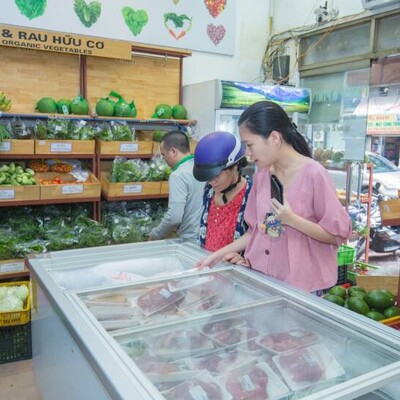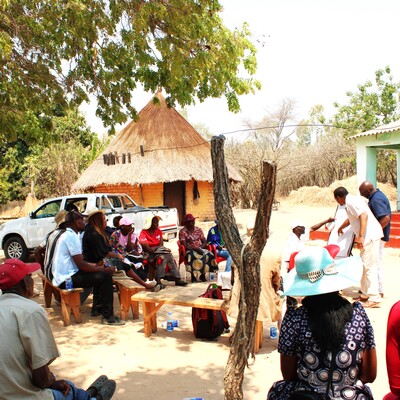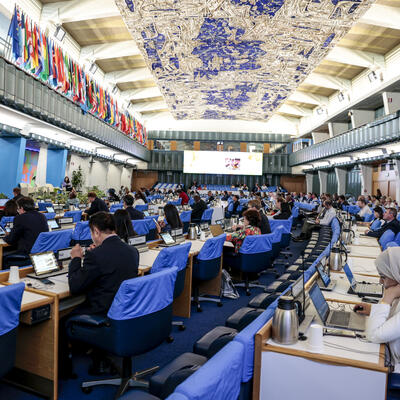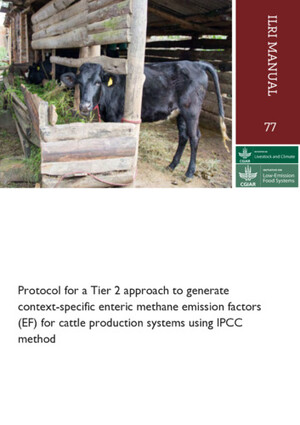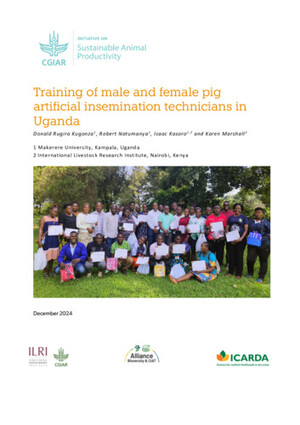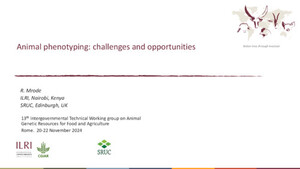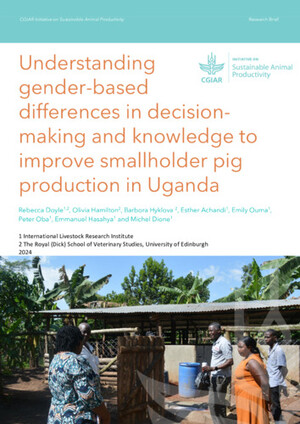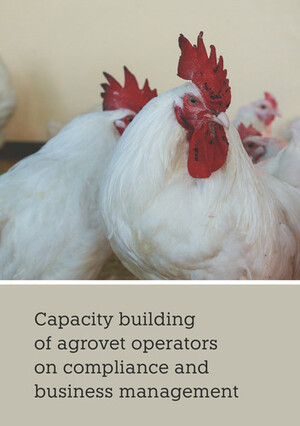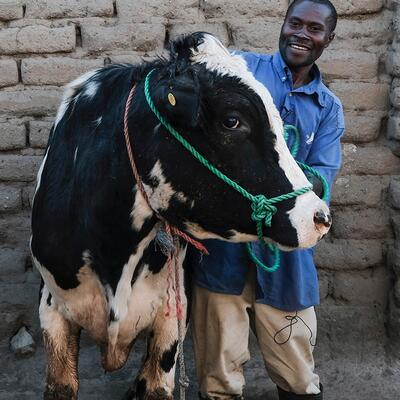
Climate change and small ruminants in extensive systems in East Africa – challenges, co-benefits and options for methane mitigation (CHANCE)
Introduction
CHANCE Project aims at generating the respective localized scientific evidence by using animal respiration chambers and feeding small ruminants (sheep and goats) under controlled conditions at ILRI’s Mazingira Centre in Nairobi, Kenya. In a first animal and manure intervention experiment, we aim at including a breed comparison together with a health aspect (nematode infection), the latter being one important factor contributing to lower animal productivity and assess its subsequent effects on enteric methane emissions and productivity as well as GHG emissions from the animal excreta. In a second animal experiment, we will test one possible intervention by selecting a local fodder plant rich in plant secondary compounds (PCS) and test its suitability for methane mitigation and productivity increase in sheep as compared to goats.
Dissemination of the research results will be achieved via stakeholder workshops in-country and which are regularly organized under a related project, the “Programme for Climate-Smart Livestock” (PCSL) led by the Sustainable Livestock System Unit of ILRI.
Project Objectives:
The project has the three following objectives:
Objective 1. GHG emissions from sheep kept in extensive systems in Sub-Saharan Africa – interactions of breed and health status (enteric fermentation and manure)
We will set up an in vivo animal experiment using sheep, to quantify GHG emissions and animal productivity by comparing two different sheep breeds. In addition, we will include a health aspect by infecting half of the experimental animals with a gastrointestinal tract (GIT) parasite (H. contortus) and comparing these to a non-infected control group.
The specific sub-objectives of this trial are:
- to generate enteric methane emission and productivity data for two sheep breeds commonly found in extensive systems in SSA.
- to compare a local (resistant, Red Maasai) and a sheep breed not specifically resistant against H. contortus (Dorper) in terms of enteric methane emissions and animal productivity.
- to test two types of manure management practices (heaping and the potential digestion in small-scale biodigesters) to quantify GHG emissions and reduce the number of surviving eggs and larvae of H. contortus in the manure with the aim of lowering parasite spread.
Objective 2. Impact of improved feeding on animal productivity and enteric methane emissions in sheep compared to goats
We will set up a second in vivo animal experiment to evaluate the extent to which supplementation with a plant rich in plant secondary compounds (PSC, i.e., tannins), can mitigate methane emissions from enteric fermentation and to investigate if the effects are similar or different for sheep as compared to goats.
The specific sub-objectives of this trial are:
- to assess the contribution of improved nutrition with a plant rich in PSC (especially tannins) on animal productivity and enteric methane emissions.
- to investigate if the effect of supplementation differs in terms of animal productivity and enteric methane emissions in sheep compared to goats.
Objective 3: IMPACT: Knowledge Transfer and Stakeholder engagement
We will use different approaches to engage with a variety of stakeholders with the aim to facilitate a dialogue that leads to a better understanding of the relationship between the impacts of disease burden (i.e., the infection with nematodes) and improved feeding on GHG emissions (either from enteric fermentation or manure or both) and animal productivity by comparing two different breeds of sheep (experiment 1) and two different small ruminant livestock species (sheep and goats). A wide-scale stakeholder engagement will be achieved by both publishing the results from the two feeding trials in peer-reviewed scientific literature and presenting the results during workshops organized within an adjacent project, the “Programme for Climate Smart Livestock (PCSL)” that is being implemented by ILRI in three East African countries (Kenya, Ethiopia and Uganda). We will use the recently established stakeholder workshops of ILRI’s Programme for Climate Smart Livestock (PCSL) project as a platform for distributing the results of the proposed work. PCSL is already working in three countries (Uganda, Ethiopia and Kenya) and organizes regular stakeholder workshops which are functioning as a learning platform to enable a continuous policy dialogue. However, we assure that we will be very clear in the resulting research, outcomes and outputs of the respective projects and funding schemes, both on posters/leaflets and in presentations. We foresee that our results will lead to evidence-based advice to livestock keepers. To support this, we will develop a factsheet (1 pager) that can be accessed by farmers that summarizes the results from the research work carried out under the present proposal (“farmer fact sheet (in brief))”. We will also include the results in the Mazingira training material. Additionally, we foresee that our results might lead to additional investments in order to study the relationship between animal health, productivity and its consequences for climate change on a larger scale.







